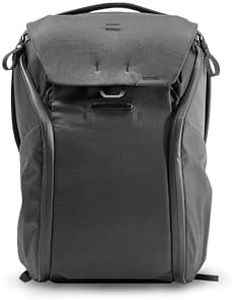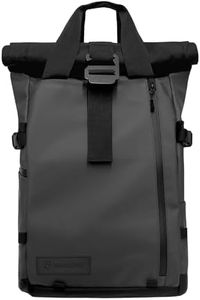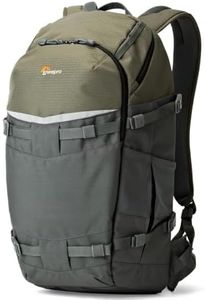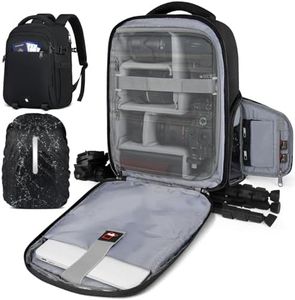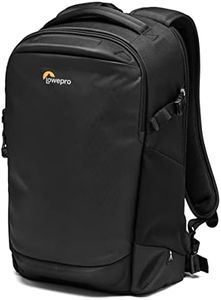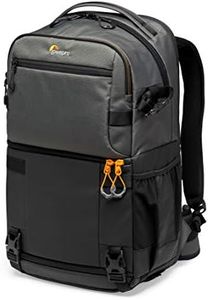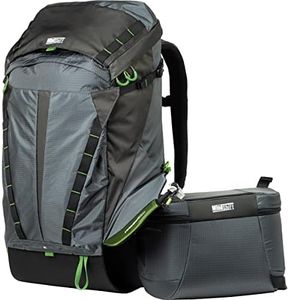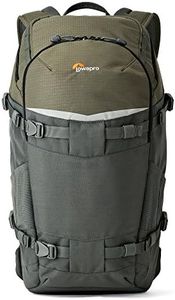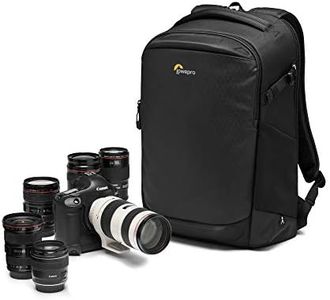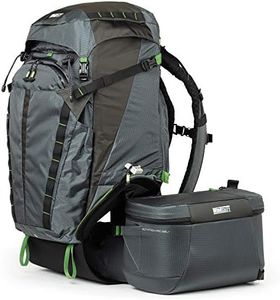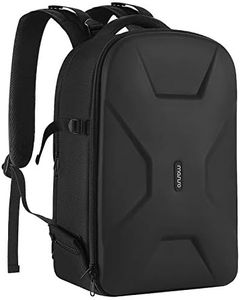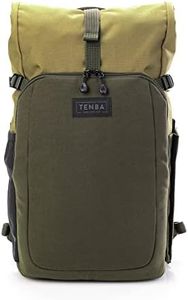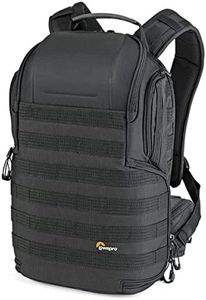We Use CookiesWe use cookies to enhance the security, performance,
functionality and for analytical and promotional activities. By continuing to browse this site you
are agreeing to our privacy policy
10 Best Camera Backpacks
From leading brands and best sellers available on the web.Buying Guide for the Best Camera Backpacks
When shopping for a camera backpack, it's important to balance protection, storage, and comfort. Choosing the right backpack is all about understanding your gear, your shooting style, and how you plan to use it. You'll want something that keeps your equipment safe, is comfortable to carry for long periods, has space for your essentials, and fits your personal style and travel needs. Think about the types of cameras and lenses you have, whether you'll carry a laptop or other electronics, how often you'll be outdoors, and if you'll need room for non-camera items.CapacityCapacity refers to how much gear the backpack can hold. It's important because you'll want enough space for all your cameras, lenses, and accessories without the bag feeling too bulky or too empty. Capacity is usually described in liters or by how many camera bodies and lenses it fits. Small capacity is great for a light setup and casual shoots, medium is ideal for most photographers carrying 1-2 bodies and several lenses, while large is for professionals with lots of equipment. Choose according to how much gear you typically bring on a shoot; don't overestimate and end up lugging a heavier bag than you need.
ProtectionProtection indicates how well the backpack shields your camera gear from shocks, bumps, dust, and weather. The main features to look for are padded dividers inside, weather-resistant material, and reinforced bases. Some backpacks also include rain covers. Well-padded, compartmentalized bags are best for expensive or fragile equipment, while lighter padding works if you're less worried about rough travel. If you often shoot outdoors or travel in tough conditions, opt for higher protection, but if you're mostly in safe, indoor environments, you can pick a lighter, less reinforced pack.
OrganizationOrganization is about how your gear is arranged and accessed inside the backpack. Look for customizable dividers, separate compartments, and pockets for accessories like memory cards, batteries, and personal items. Backpacks with flexible layouts are helpful if your setup changes often, whereas fixed dividers may work if you always carry the same kit. Consider quick-access points if you need to grab your camera fast; multiple pockets add convenience for cables or snacks. Pick a level of organization that matches how many small items you carry and how you like to access them.
Comfort and FitComfort and fit matter because you'll likely carry the backpack for hours. Features like padded shoulder straps, breathable back panels, and adjustable chest or waist straps make a big difference. Lighter, simpler straps are ok for short trips, but more robust support is essential for heavier loads or long days. Try to match the comfort features to how heavy your gear is and how far you expect to walk. Choosing an ergonomic design suited to your body size is key to avoiding back or shoulder pain.
Access MethodAccess method describes how you get your gear out of the bag: from the front, back, sides, or even top. Side and quick-access panels allow you to grab your camera without taking the bag off entirely, useful in fast-paced environments. Full back or front panel access helps when you want to organize all your gear at once, like before a shoot. Think about your usual shooting pace: quick zippers and panels help for fast street or wildlife shooting, while full-opening bags are better for slower, planned work.
Laptop and Tablet StorageLaptop and tablet storage means a dedicated compartment for your electronics—a must if you edit on the go or need to stay connected. Bags vary, from slim sleeves that fit tablets to padded pockets that hold large laptops. Make sure the pocket fits your specific device and offers enough protection. If you don't need a laptop or tablet, you can skip this feature, but if digital workflow is part of your routine, prioritize a bag with secure, easy-access storage.
Weather ResistanceWeather resistance describes how well the bag protects your gear from rain, dust, and harsh conditions. This can include water-repellent fabrics or built-in rain covers. If you're frequently outdoors or in unpredictable weather, choose a bag with solid weatherproof features. For mostly indoor or dry-environment shooting, you may not need as much protection, but it's always helpful to have at least some resistance to the elements.
Style and DiscretenessStyle and discreteness are about the look of your bag and how much it attracts attention. Some bags look like typical backpacks, which can be good in urban settings or when you want to avoid drawing attention to expensive gear. Others look more technical or rugged. Think about where you'll use your bag—if stealth is important, go for simple, less flashy designs; if you care more about outdoor performance, rugged looks might be just right.
